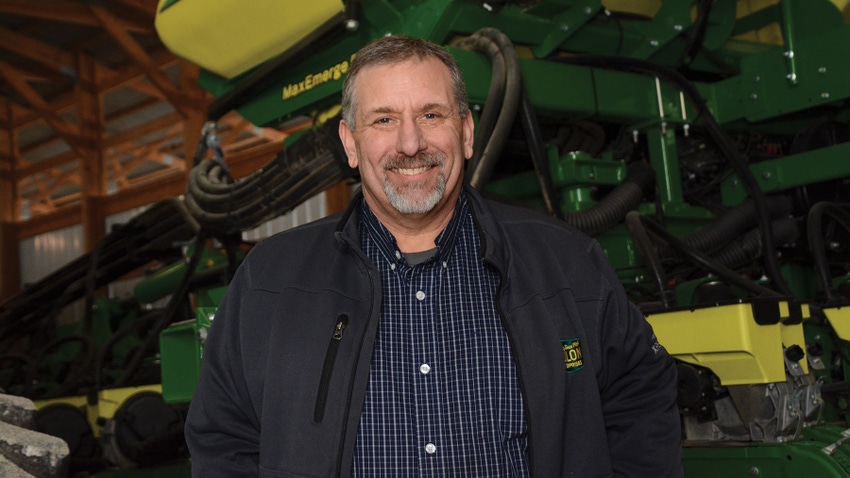
Faster and bigger planting equipment helps neutralize wild weather patterns that crop farmers face each spring. But certain rules of thumb can be helpful.
Between any rainouts, Rodney Rulon is set up to plant crops in 10 days, a typical benchmark for Midwest corn and soybean farms. The farm has one 24-row, 30-inch planter for corn and one 48-row, 15-inch planter for soybeans, and calculates a 30-inch row of planting capacity and equipment per 100 acres.
“A 24-row planter should be able to plant 2,400 acres easily over 10 good days, and if we plant 300 acres a day, we should be able to cover 3,000 acres in each planting season,” he says. “Some guys want 80 acres per row, which gives you more time but underutilizes your equipment investment. Some want 140 acres per row to lower their cost of equipment per acre, but it makes the window longer to get everything planted and wears on the equipment and people. What matters is not how big your planter is, it’s how many acres per row you’re planting.”
So what if you’re set up right and you add more acres? You can then add more planter capacity or run the planter longer. That solution can work — up to a point.
“Eventually, you get to where it’s more acres than the planter can manage and things start to break,” he says. “You have to decide your labor and equipment scenario, and what makes sense to you.”
Rulon considers his no-till setup a timesaver, since it creates better soil structure, allowing water to percolate and reduce wet spots. He also bought a tile plow shortly after committing to no-till to ensure fields dry as quickly as possible.
“One of the best time management tricks is to have tiled fields, because it means you have twice as big a window to plant compared to untiled,” he says.
With no-till, Ohio farmer Jan Layman runs equipment at 5 mph, slightly slower than tilled operations. But it’s why they have four planters going at once.
“If things are tuned up and going well, we have planted as much as 950 acres in one day with two corn planters and two bean drills,” he says.
Should you run 24/7? It depends on who is involved. “All our employees are not family members, so you can’t push people too hard,” says Layman, who usually calls everyone in when the sun goes down. “That’s when people do dumb things, make mistakes, break things and get hurt. If we start at 7 a.m. and go to 9 p.m., that’s enough of a day.”
About the Author(s)
You May Also Like






